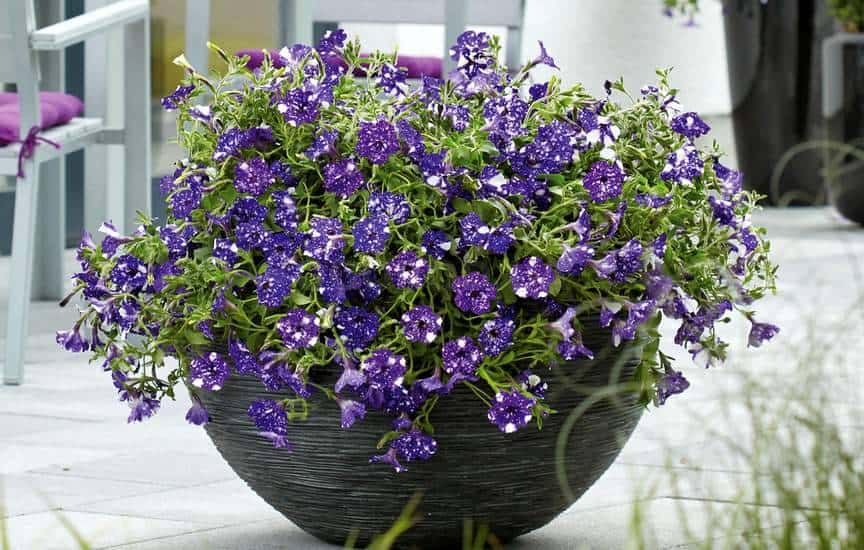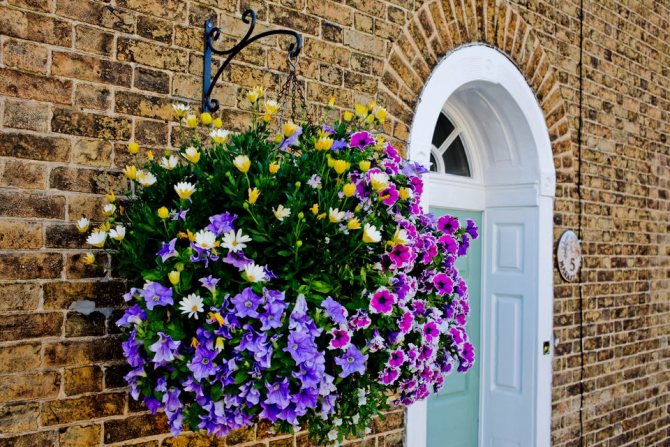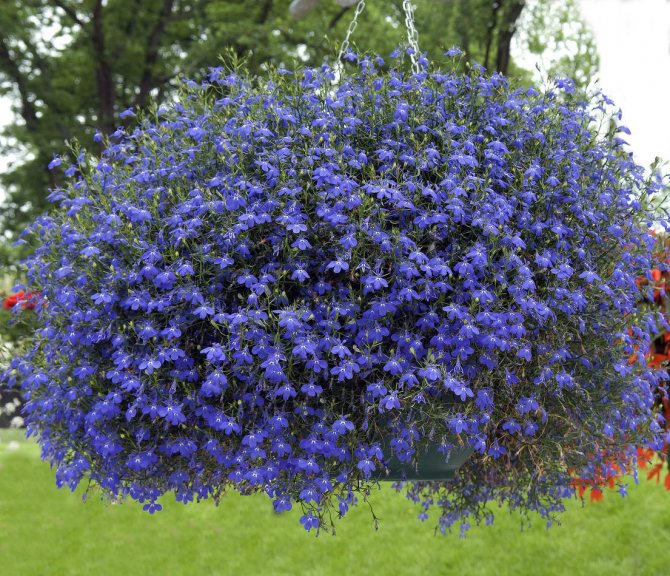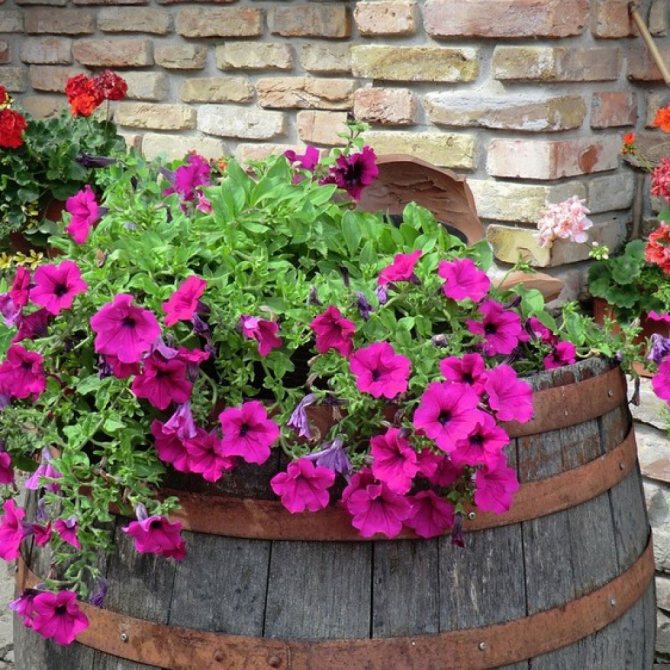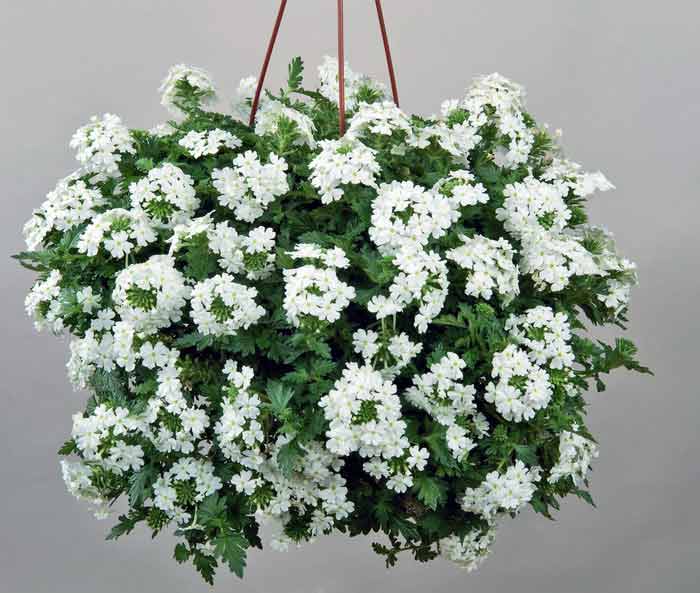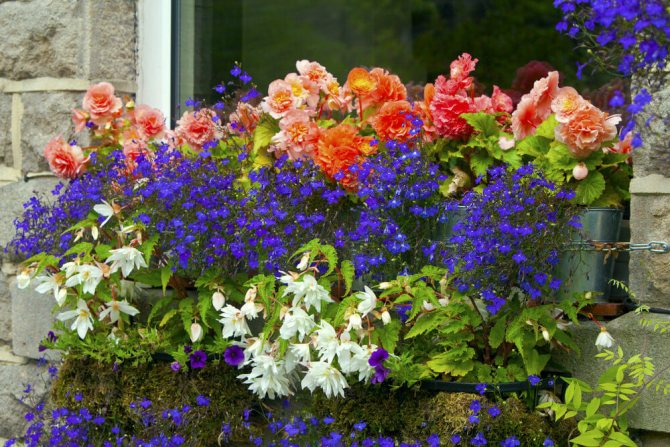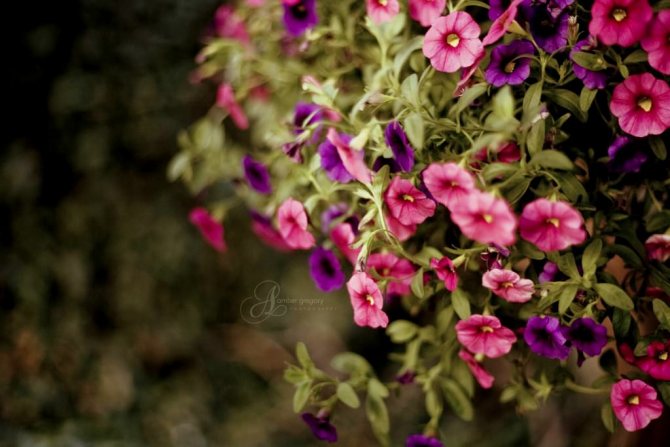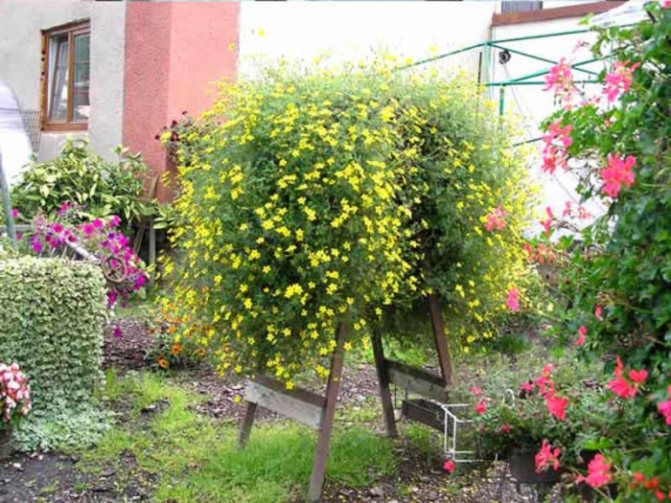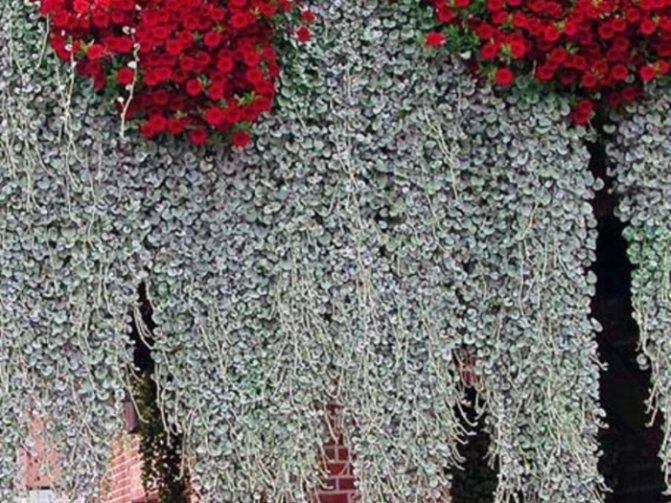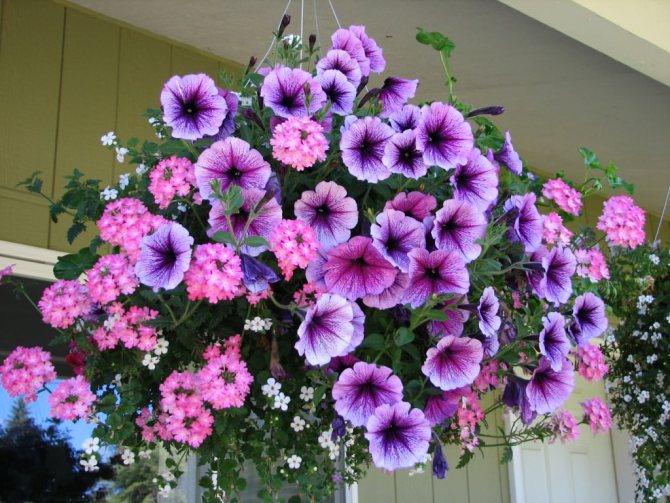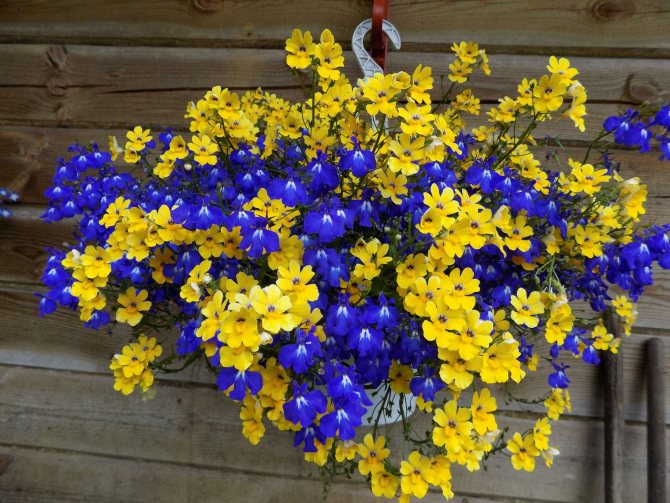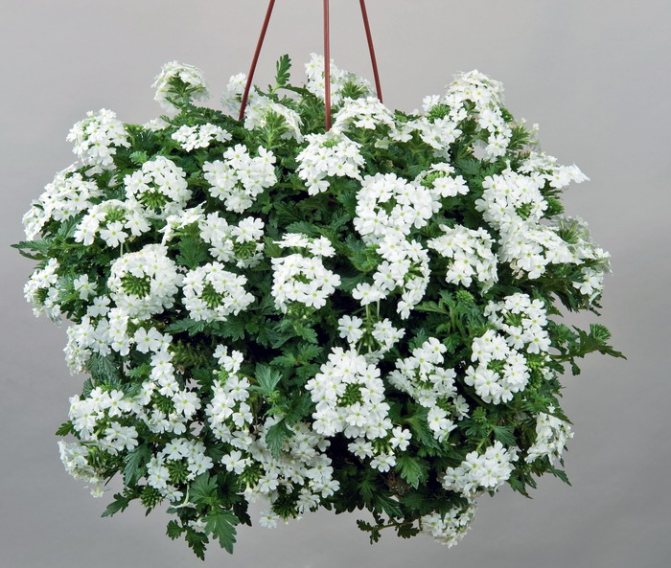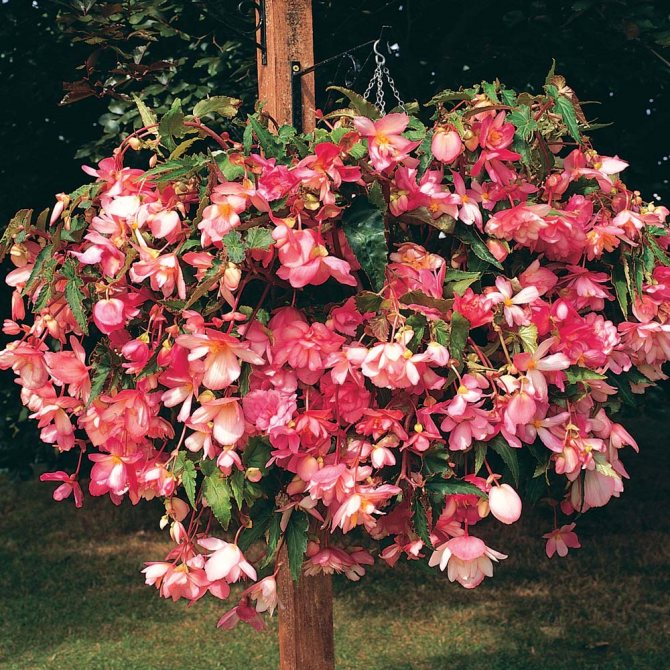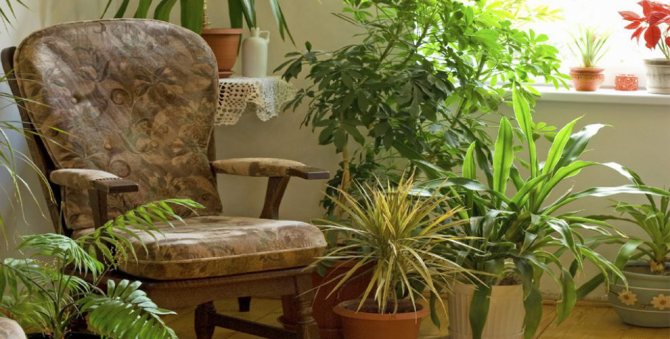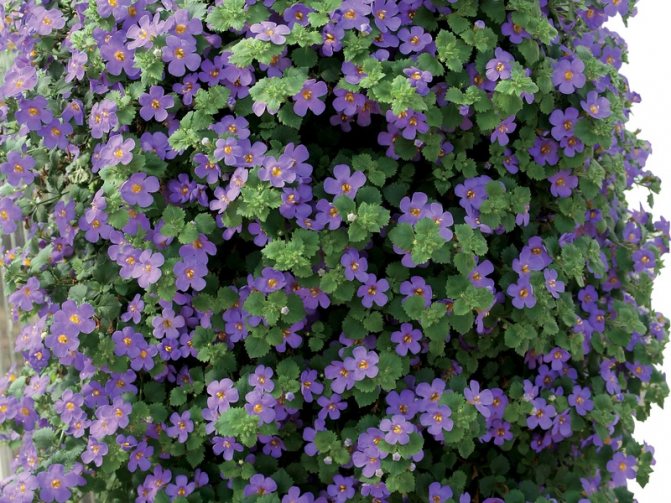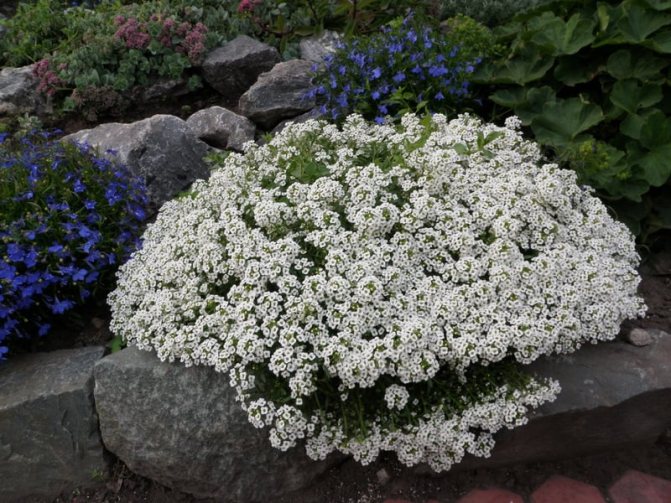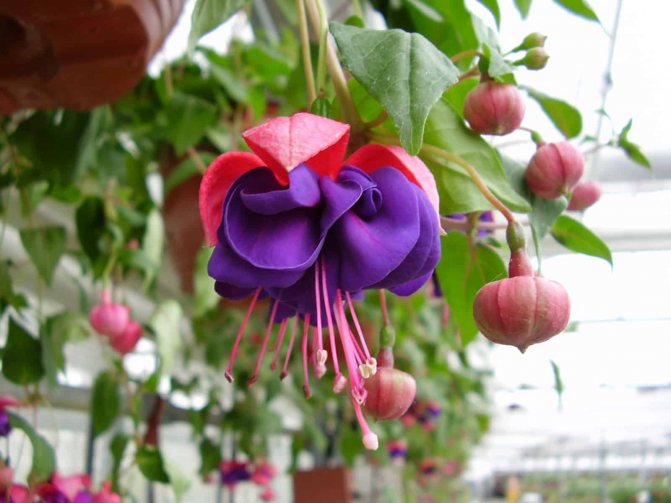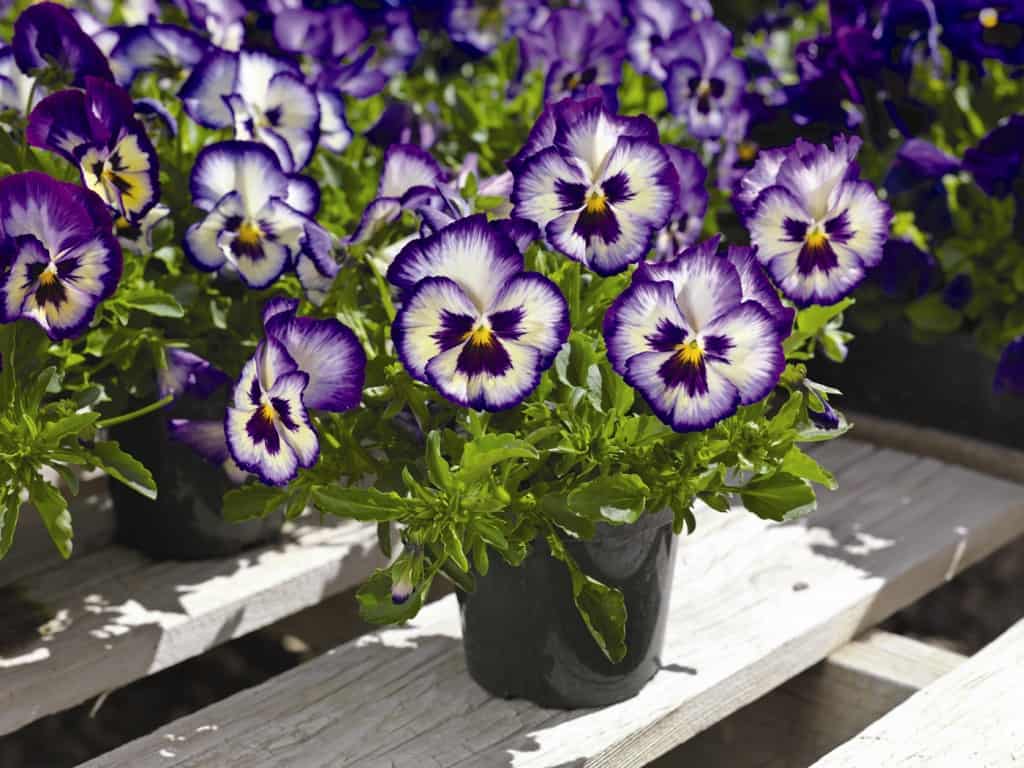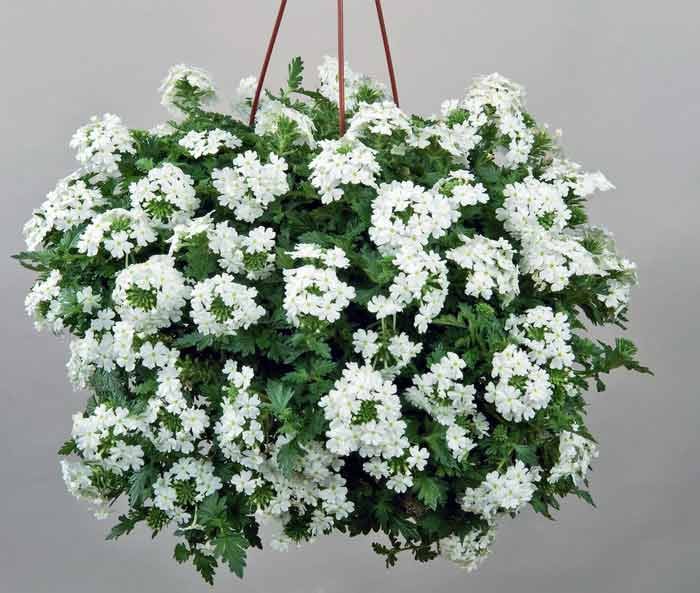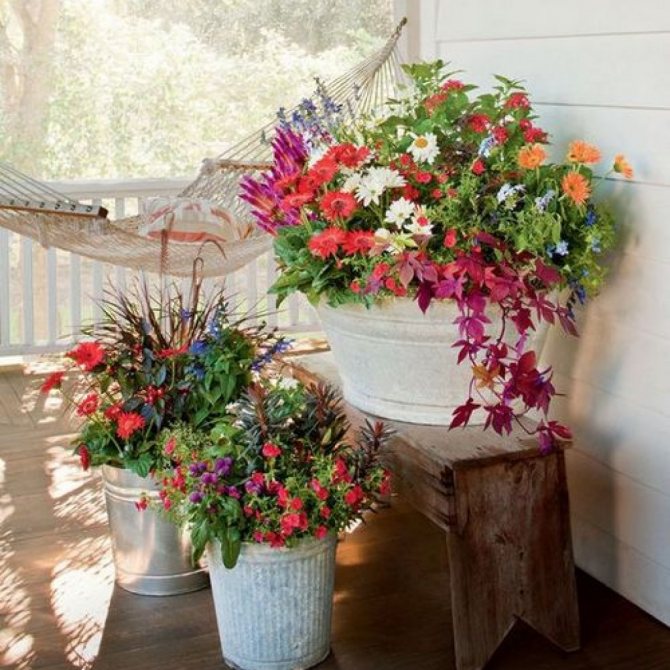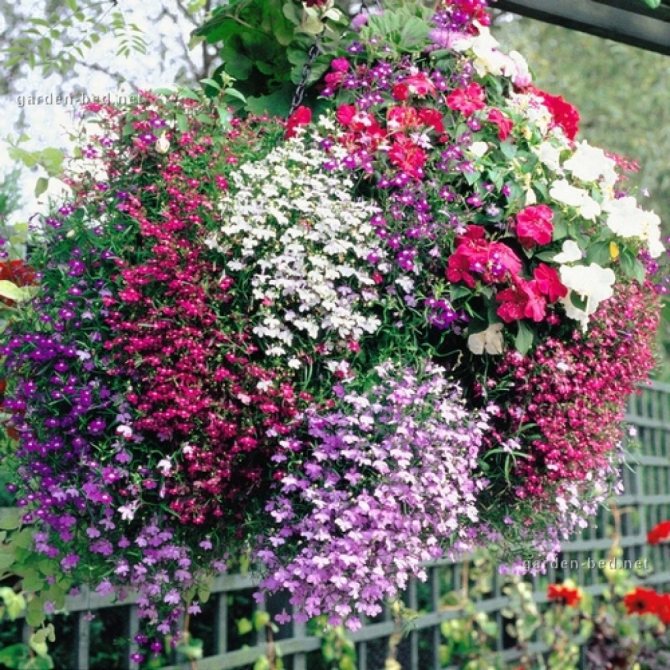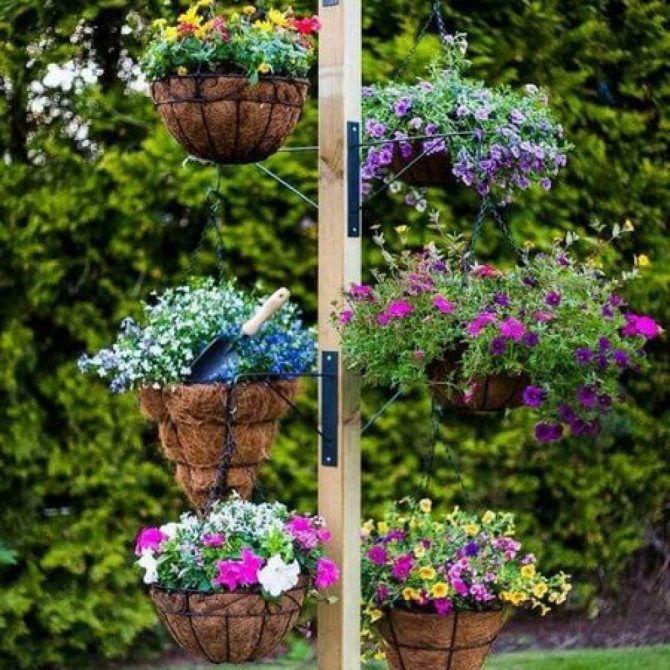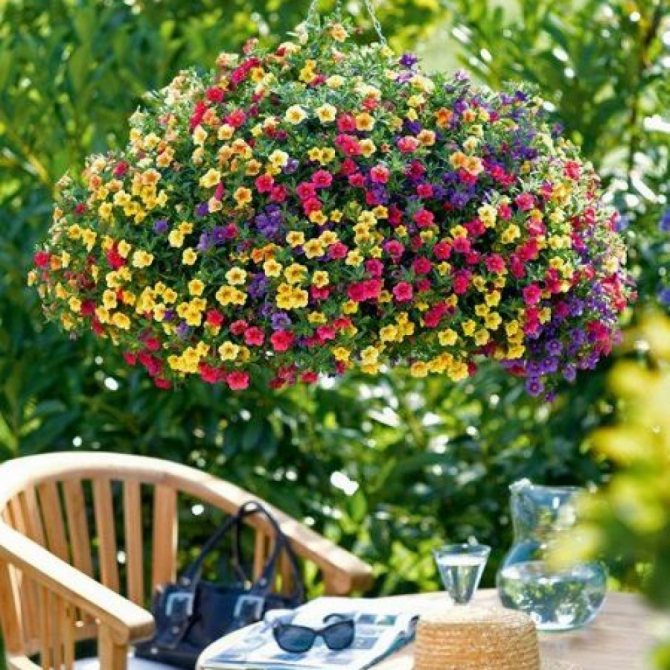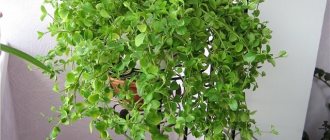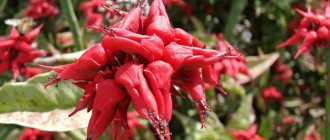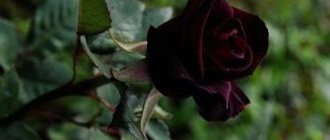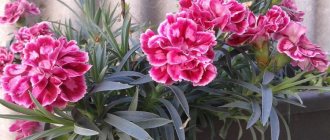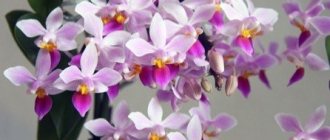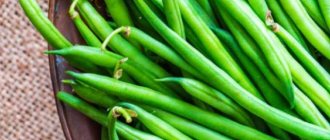What is Ampel?
Ampel plants or ampels - decorative representatives that are grown in hanging pots, baskets, vases. The name "ampelous" comes from the Latin word Ampella, which is translated into Russian as "small bottle".
Ampel flowers
You can put any flowerpot in pots or vases, but best of all for the ampel, climbing, creeping or falling shoots are suitable... Ampels can grow in an apartment, greenhouse or in the ground.
TOP-1O most popular hanging flowers for home and garden
Ampels are divided into:
- Succulents
- Decorative deciduous
- Beautifully blooming
Also Ampels are divided into curly and creeping. Curly - release antennae... With the help of them, they cling to the net or other nearby objects and rise up. Creeping - hangs the container high above the floorin which the plant grows. The stems hang down freely.
Below are the most popular types of ampel plants:
Petunia
One of the most beloved representatives of all gardeners. Differs from other representatives in a variety of colors and shapes, long flowering... Blooms from early spring to late autumn. Easy to care for. Petunia prefers lighted, warm places. Growing rapidly. Blooming wattle fences completely cover the edges of the hanging container.
Begonia
A well-known ampel. Begonia flowers are coral or bright red. Their shape resembles a miniature chrysanthemum. You can plant this begonia in a flowerpot, box or flowerpot.... Extremely negatively tolerates heat and bright rays of the sun. Therefore, it is important to place it in partial shade.
Dichondra
It differs from other representatives in that there are no flowering on it, or they may appear periodically. Dichondra flowers are inconspicuous, dull, almost invisible. It beautifies any place thanks to its silky-green leaves with silky fringes and lashes reaching more than one and a half meters in length... In nature, dichondra grows in swampy areas. It is thermophilic, so it can be found on open terraces only during the warm season. To save the plant from frost, it should be brought indoors for the winter.
Verbena
A herbaceous flower that blooms from early spring to late autumn. Grown as an annual. But verbena can handle winter well. They are planted in hanging containers. The stems hang down a meter. Verbena grows very quickly. Leaves are dense and hairy. Verbena stalks can be blue, purple, pink or red... After flowering, a nutlet is formed. It falls into four parts. Butterflies and caterpillars feed on verbena.
Bacopa
Rarely found in Russia. It is widely known in European countries. Herbaceous, creeping and climbing perennial plant. Scourges reach 1-1.5 meters in length... Leaves are olive greenish. Bacopa blooms in waves. The buds bloom at the same time and fall off after flowering. Then new buds open. Thus, Bacopa blooms throughout the season. For the winter in regions with severe frosts, it is brought indoors.
Geranium
A hanging plant that produces long shoots or curls up a wall. Trumpet geranium differs from ordinary geranium in its long, strong shoots, which are able to withstand the weight of the leaves and a huge number of flowers.... The leaves are smooth, five-pointed, without a feather on the surface. Geranium flowers are large and bright. They are the pride of any grower. Therefore, flower growers prefer to plant different types of geraniums in one container in order to get flowers of different colors.
Lobelia
Belongs to the bellflower family. Perennial herb. Although gardeners use lobelia as an annual plant. The leaves are densely arranged on the stems, small and shiny. The flowers are also small in size but have a vibrant cyan, magenta or violet color.
Fuchsia
A special feature is the unusual shape of the flowers and the duration of flowering. Flowers can be blue or purple... The shape of Fuchsia flowers can resemble bells or dancing ballerinas.
Nasturtium
A herbaceous plant that pleases with its flowering almost until the very frost. Stems can be either erect or weaving.... Irregularly shaped nasturtium flowers can be orange, yellow and red.
Campanula
Herbaceous plant with light green, round leaves with jagged edges... Campanula differs from other ampelous flowers in large and densely located on the stem.
Ampel annuals: how to grow seasonal flowers
From the same point of view (evaluating the growing process), consider annual flowers. You can breed them in three ways: purchase seeds, sow them in order to obtain seedlings, which are subsequently planted in pots; buy seedlings, place them in a container for seasonal growth; get a ready-made flower.
Important! When purchasing seeds for growing flower seedlings, you must follow the recommendations for sowing dates. Being late even by 1–1.5 decades can affect the active vegetative process.
Each option has its own pros and cons, which can only be listed: savings, additional waste of funds, long waiting for the result, difficulty of adaptation, the ability to experiment, satisfaction from the process and achievement of the goal ... Everyone himself determines the acceptability of the conditions. In any case, the result will be the same - beautiful flowers for pots on the street for the whole summer.

The advantages of annuals are abundant flowering and resistance to high temperatures.
If we try to make a comparison between the growing season and the peculiarities of caring for perennial ampelous and one-year-olds, we get the following:
- care during the season is generally the same, not counting the nuances for different species and those and other colors;
- one-year-olds are absent in winter, perennial ones need care;
- annuals have more abundant flowering;
- summer plants are more resistant to drought and high temperatures.
It is worth paying attention to the fact that more and more new types of annual ampelous plants appear in flower shops, surprising with their unique beauty. Among them, it is worth highlighting the hybrid petunia - calibrachoa. The flowers are smaller than those of the progenitor, but there are much more of them. The stems are longer, they can reach 1.5–2 m, they become much lignified.
Bacopa flowers are a miracle novelty. Photos on the Internet show fluffy green stems dotted with lots of delicate white flowers. With external fragility, the plant is resistant to high temperatures, drought and excessive moisture.
We decorate the site with "bells": Nolan's flower in the decoration of the territory
Nolana hanging flowers can be a wonderful decoration of the infield. This plant appeared not so long ago in household plots, but the demand for it is constantly increasing, since the plant has both high decorative qualities and good resistance to changes in humidity, temperature, and strong winds.
Nolana is a "bell".Indeed, in this ampelous plant, flower stalks resemble bells in shape and color. Small, up to 5 cm in diameter, with carved edges, flowers come in blue, blue and purple shades. During the flowering period, Nolana emits a pleasant aroma. The leaves are green, succulent, which allows the plant to survive in conditions of significant drought. The flowering period is quite long - from mid-June to the onset of sub-zero temperatures. Creeping stems, one plant can cover an area of up to 1 m².
On the Internet in the photo, ampelous flowers of Nolan are represented by several types: blue inflorescences with a yellow center, blue inflorescences with a yellow center and a white throat, purple with small white blotches along the pistil.
It is worth noting that this flower has a tap root system, which practically does not branch out to the sides. This must be taken into account when choosing a container for planting.
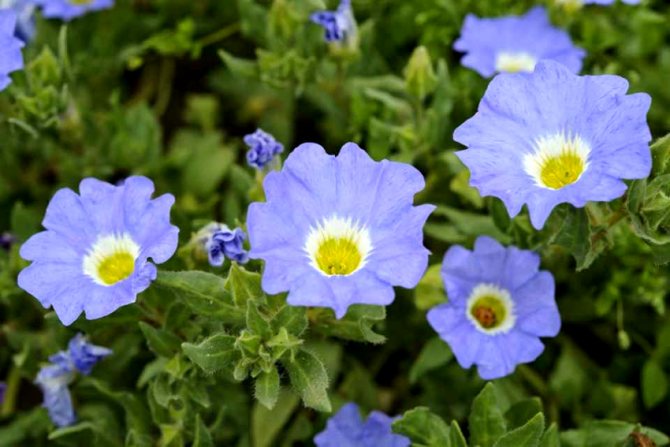

Nolana's hanging flowers can decorate any backyard
For lovers of bright design: ampelous nasturtium
A special place among ampelous plants is occupied by nasturtium. Looking at a pergola, a gazebo or a balcony twisted almost to the top, you might think that this perennial plant has greened the structure so much in five years. In fact, one summer season is enough for this nasturtium.
In total, there are 90 species of this plant. Among them there are 25 cultural ones. We use 4 types as decorative design:
- small nasturtium - a low plant for flower beds and front gardens;
- Canarian nasturtium - a liana, which definitely needs support;
- shield-bearing nasturtium - a shrub with creeping stems;
- large nasturtium, gives shoots up to 70 cm.
The last three types can be used as ampelous flowers for pots in the country. Pictures with titles on the Internet will help you choose the right option.
The flowers of this plant can be yellow or orange. In large nasturtium, they are large and bright. In Canary and thyroid - yellow and small.
The plant with deep red double flowers was obtained by crossing large and thyroid nasturtium.
Important! A hybrid nasturtium grown from its own seeds will not inherit maternal traits. It is better to purchase seedlings or seeds in specialized stores.
Nasturtium is thermophilic, but it is better to shade the plant in the scorching summer heat. Watering is generally required moderate, more intensive should be used during the budding period.
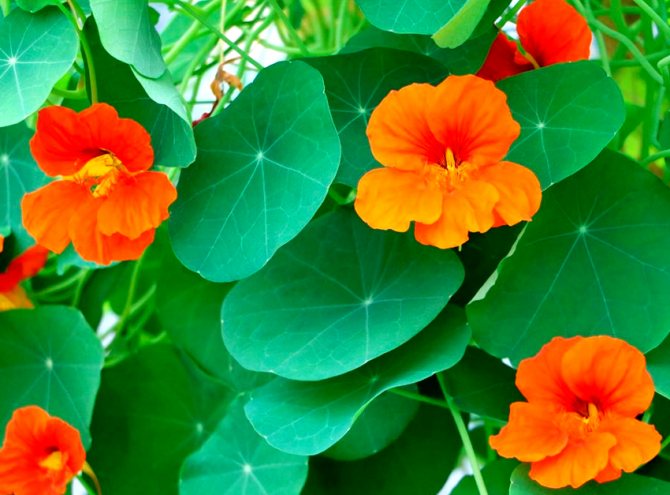

Florists should understand that hybrid nasturtium grown from their own seeds will not inherit maternal characteristics.
Dichondra ampelous: photo of "waterfalls", "backgrounds", "foundations"
Ampel dichondra can be attributed to those plant species that have not yet been fully appreciated. You can meet her more often in those areas that were designed by professional designers. Ampel plants are not only stems strewn with flowers. In particular, dichondra has decorative leaves. The peculiarity of the plant lies not only in their color, but also in the abundant fluffy mass, which the flower, under optimal conditions, can collect in just two to three weeks.
The most common types are the “silvery waterfall” dichondra and the “emerald waterfall”. Densely falling, rather straight stems are really associated with a waterfall. The words “silver” and “emerald” indicate the color of the leaves.
The flower is extremely unpretentious, does not require frequent and abundant watering, and can withstand high temperatures. Likes external spraying with warm water. The emerald look feels comfortable in the shade.
Quite often, these ampelous flowers for pots are used when decorating plots as a background, shading and emphasizing the brightness of other flowering plants.Several dichondras, arranged in a certain order, can form a tent, hedge and other three-dimensional figures.
Ampel plants for the garden: examples of the best varieties and some design ideas


Ornamental plants that have a long flexible stem and look beautiful in hanging pots are called ampelous. The stem of the ampelous, as a rule, is not able to support itself, it needs to either rely on something or hang down. It is this property that makes ampelous garden plants very popular among amateur gardeners. Such decorative crops - in our conditions, are mainly annuals, they grow rapidly, bloom almost all summer, and in a short time they are able to turn the territory adjacent to the house and individual corners of the garden into places of amazing beauty, beckoning to relax among the splendor of the colors of nature.
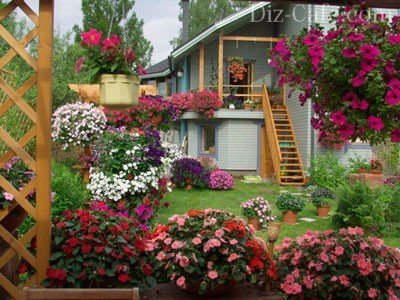

The garden around the house was created using ampelous plants - they are placed around the perimeter, suspended from the veranda. Their luxurious bloom can completely change the appearance of the site.
What varieties of ampelous are better to plant on the site?
Consider some garden ampelous plants that bloom beautifully and are unpretentious to care for.
Option # 1 - hanging begonia
A wonderful plant with small scarlet or bright red flowers on delicate, flexible and long stems. The flowers resemble small chrysanthemums. This is a rather whimsical plant that does not tolerate heat at all and needs frequent watering. You should not place begonias in the bright sun; you need to choose a shaded corner for it. If the summer is too hot in your area, this plant will not work for the garden.
Ivy Pelargonium.
Ivy-leaved pelargonium is an ampelous plant with flexible thin, smooth, branching, creeping or drooping stems that form a bright colored cascade of numerous umbellate inflorescences. Pelargonium ivy is planted in open ground with the onset of stable heat. She absolutely does not tolerate close proximity to other plants (shading, thickening). And it is advisable to plant the planting in the ground without removing the pelargonium from the pot, otherwise it will actively branch and grow to the detriment of flowering.
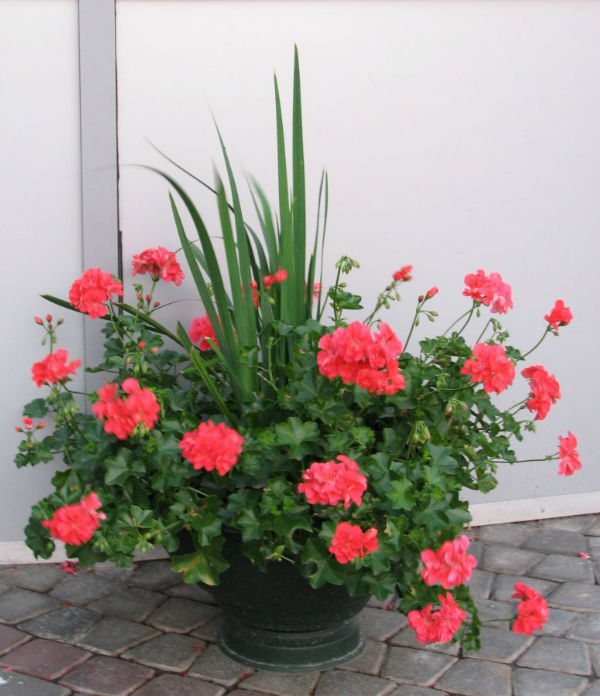

Despite the fact that this plant tolerates a drop in temperature to +5 ° C without problems, even minimal frosts are already destructive for it, therefore, for the winter, ivy-leaved pelargonium will still have to be dug out of the ground and transferred to the room.
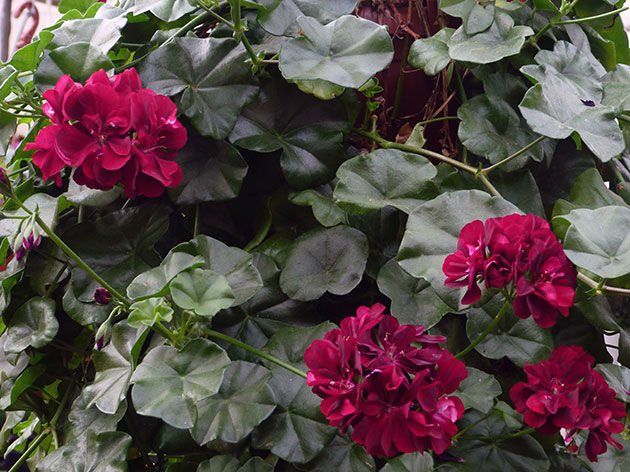

Ivy Pelargonium does not need to be sprayed. Moreover, it is contraindicated for her: rot may appear on the leaves. It is also necessary to avoid getting moisture on flowers in direct sunlight: burns may occur.
Examples of garden decoration using ampelous
The beauty of ampels is that it is easy to grow them, or you may not even grow them yourself, but buy already flowering plants in pots, or purchase beautiful decorative pots and transplant seedlings into them - petunia, pelargonium, fuchsia, begonia.
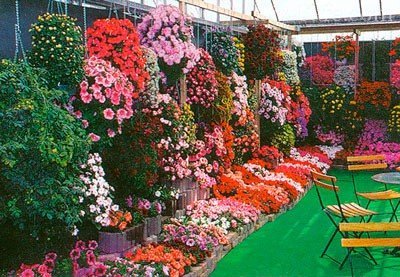

A beautiful wall of ampelous plants arranged in several tiers
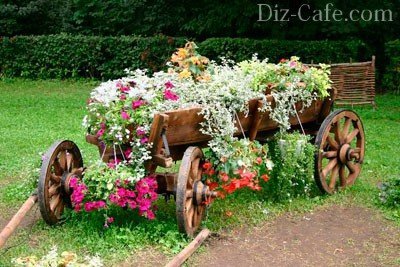

Garden composition of ampelous country style. If there is no cart, you can use a decorative well, wattle
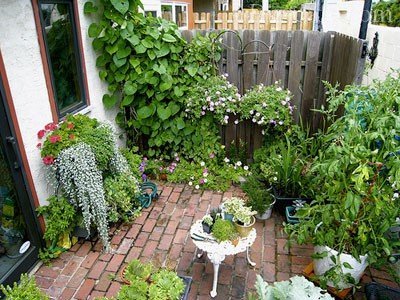

By placing ampels against the walls, you can create a cozy little courtyard.
With the help of ampelous plants, you can beautifully decorate a patio, a gazebo, a terrace. They will be good planted in tubs along the garden paths. Ampelous plants and vines can form a beautiful combination. Vines can twine around a fence, the wall of a house or other building and be a spectacular green background for ampels. If you don’t have enough time to grow plants in your garden, decorate your garden with ampelous plants, placing them in hanging pots and decorative floor planters everywhere, and you will see that your garden turns into a piece of paradise.
Air beds. Ampel flowers for a luxurious garden
Ampel (ampel, ampel) are plants that themselves are not able to hold their shoots. Their long and flexible stems hang limply and charmingly down from hanging pots and baskets, and sometimes creep up along walls and other vertical surfaces.They can be perennial and one year of flowering, in the first case they are taken to a heated room for the winter. For hanging compositions, ampelniks, constantly blooming throughout the summer, are usually chosen. These plants are very decorative and endlessly varied in color and texture, and in skillful hands they turn into indescribably charming hanging flower beds and whole garden compositions.
Features of the classification
From a botanical point of view, there are many forms of such plants - climbing (beans, bindweed), climbing (grapes, hops), creeping (all ground cover), "mustache" (chlorophytum, episcia). Landscape and indoor designers distinguish in this group all plants that can be planted in a suspended container so that the stems hang down. They, in turn, are divided into flowering and decorative deciduous varieties. Plants that cling to supports and crawl upwards are referred to as the group of lianas, although by and large these are also ampels.
Heuchera
Heuchera are delightful plants that delight with a huge variety of colors. Several types of heuchera are grown in culture: cylindrical, American, small-flowered, gooseberry-leaved, blood-red, hairy, hybrid.
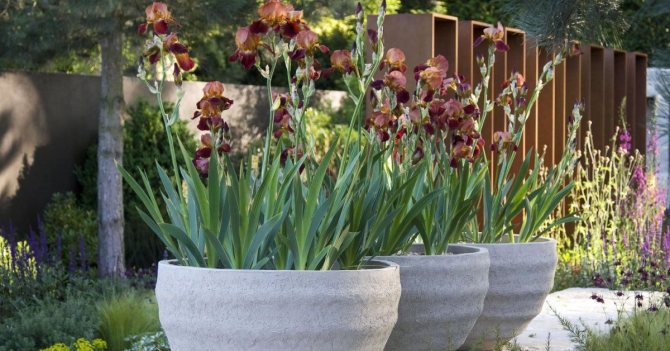

Heuchera are light-requiring, so planters with them should be installed in a sunny place.
Benefits
The advantages of decorating a plot with ampels are obvious:
- Mobility... Planters and other hanging containers can be easily interchanged, creating new compositions each time and maintaining a constant sense of novelty.
- Versatility... You can decorate anything with hanging flower arrangements - a gray nondescript wall, a modest terrace, a gazebo in the yard, and even beds with vegetables. You can hang the planter on a rack dug into the ground or place it on an old, obsolete barrel or cart.
- Easy care... They do not require anything, except for regular watering and rare feeding. They grow like ordinary indoor indoor flowers.
- Functionality... They can cover nondescript places, ugly structural elements, etc. In winter, they will become a chic addition to the home interior, insulated loggia, winter garden.
- Economical placement... They do not require additional space when suspended.
- Visibility... A suspended flower garden is equally well visible from almost any angle.
- And, of course, decorativeness... They attract attention, create coziness, create an accent in the intended place, and complete the overall landscape idea.
The best ampelous flowers for the garden
Keeping outdoors, even in the warm season, makes its own demands on flowering plants. When placed in an open area, they should tolerate the sun well, and in gazebos and on the northern walls - darkening, have greater resistance to winds, changes in day and night temperatures, and withstand the pressure of rain jets. According to the parameters of resistance to various natural factors, they can be divided into separate groups.
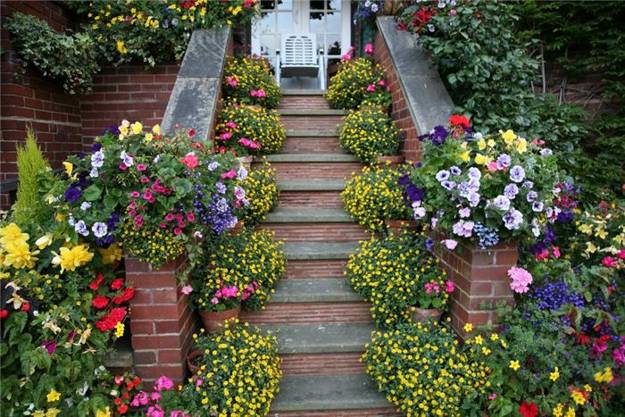

Shade resistant
Balsam (Roly wet)
Annual. Prefers moderate sun, feels great in lace shade, so flowerpots with it can be hung directly on the branches of apple, pear and other fruit trees. Under the scorching sun, it begins to fade. In warm weather, it can bloom until October.
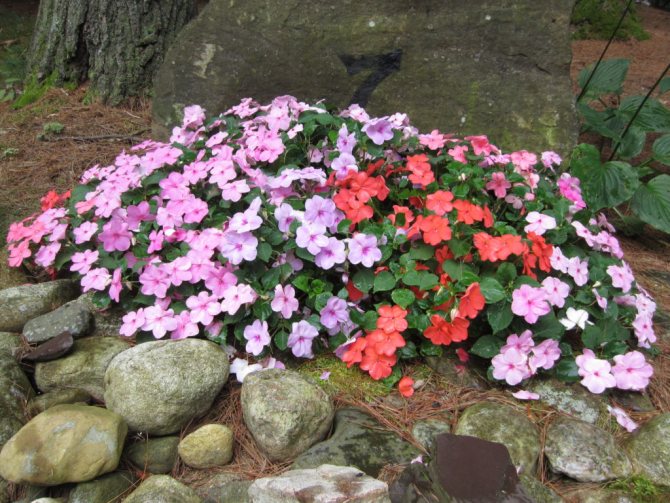

Viola ampelous (Pansies)
A breeding variety of the garden violet. Forms a spherical shrub with many variegated flowers.
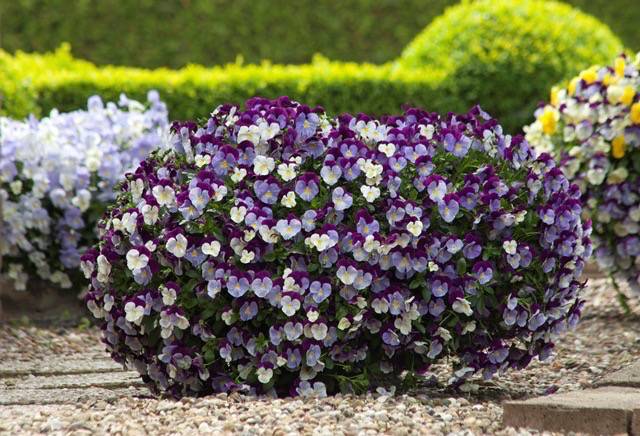

The first growing season shoots grow vertically, their drooping begins with the beginning of flowering. Differs in good shade and cold resistance. Can be grown as an annual or biennial.
Resistant to direct sunlight
Tumbelina
This is an ampelous variety of petunias with gorgeous double flowers.
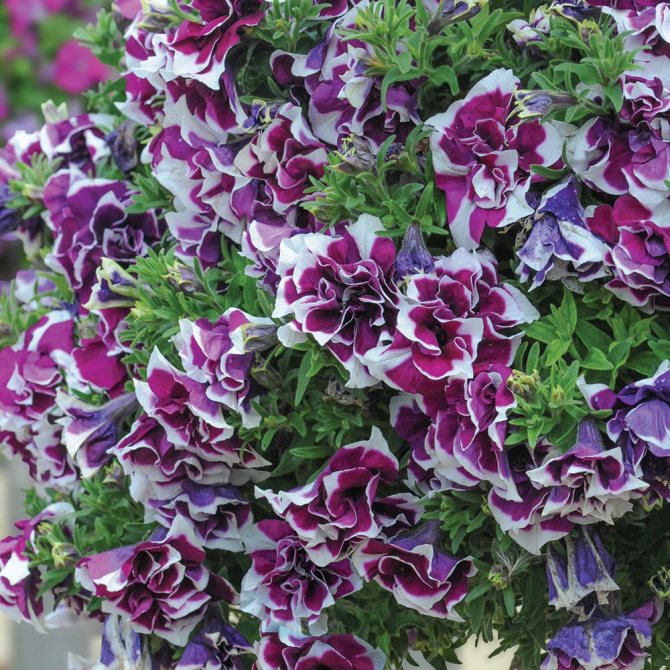

The colors can range from pale pink to deep blue. Reproduces in a vegetative way.
To enhance the splendor of flowering, you need to trim the lashes several times over the summer to stimulate the development of lateral shoots.
Surfinia (cascading petunia)
It blooms profusely and brightly, grows quickly, has a wide variety of colors, is unpretentious in care.
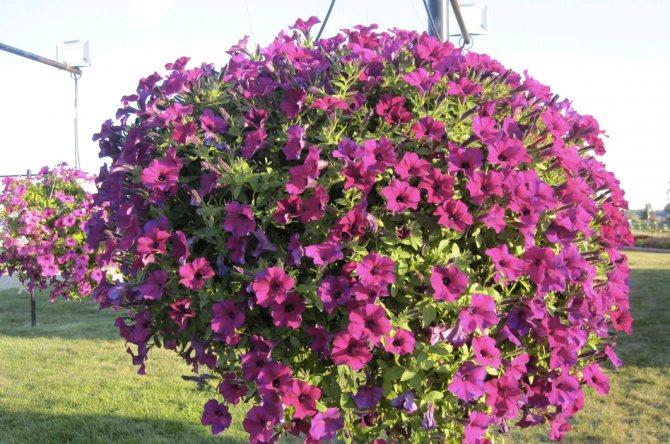

Moorish bindweed
Perfectly proved itself as a ground cover plant, draper of unattractive vertical surfaces.


It looks very pretty on the steps and supporting walls, flowing along them with a light colored blanket and covering bald spots and voids. Looks gorgeous in hanging vases. In care, he is content with little, but requires placement in a sunny location.
Moisture-loving
Fuchsia
A well-known houseplant that reveals itself from a completely different angle as an element of outdoor decoration. Photophilous, but does not like extreme heat. Drinks a lot, requires frequent watering.
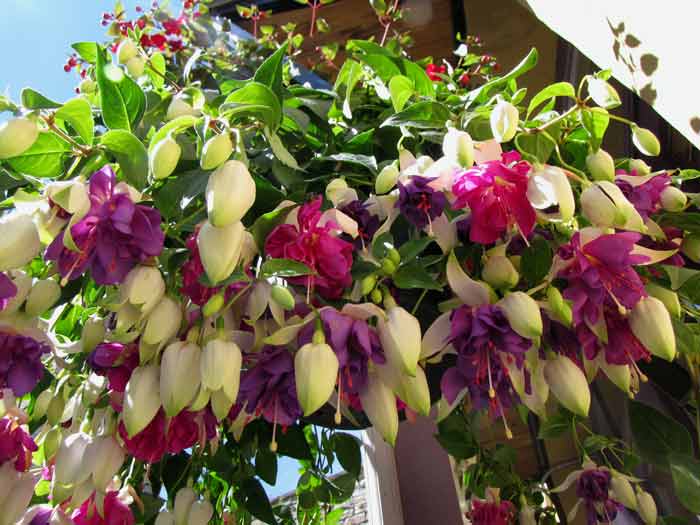

Flowers, depending on the variety, can be double and simple, blooms brightly, in white-pink and raspberry-purple tones. Produces flowers throughout the summer, but requires formative pinching. It can propagate both by seeds and cuttings; this is best done in the spring.
Dichondra
Very effective decorative leafy ampelnik. Forms waterfall compositions with long lashes hanging down to the ground. The varieties with silvery leaves are especially beautiful.
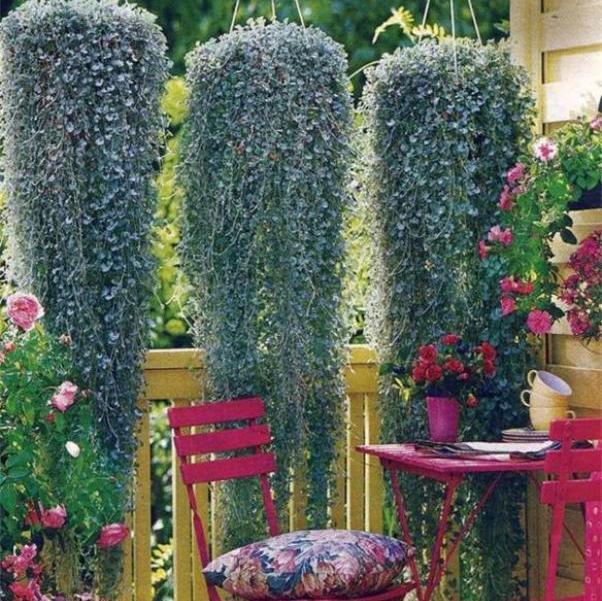

With its help, you can shade an open gazebo or veranda, arrange a fence, and hide unsightly places. Looks better in longitudinal drawers than in round pots. Easy to plant, unpretentious in care.
Wind resistant
Euphorbia "diamond frost"
Indoor plant that feels great in summer and outdoors, even in fairly windy places. During flowering, it is covered with a white cap of small flowers on the cascading shoots. Roots well in a sandy-peat mixture.


It appeared on the flower market relatively recently, reproduction occurs vegetatively. In addition to wind resistance, it tolerates a lack of moisture well, it can do without watering for several days. But in the absence of a sufficient amount of light, it does not bloom so abundantly, which is why it loses in decorativeness.
Fortunia
This flower is often confused with petunia, but in fact it is its F1 hybrid. Available in seven colors - from pink and salmon to raspberry and purple. It blooms luxuriantly and for a long time, it is distinguished by good resistance to bad weather. This perennial crop in this variation is grown as an annual.
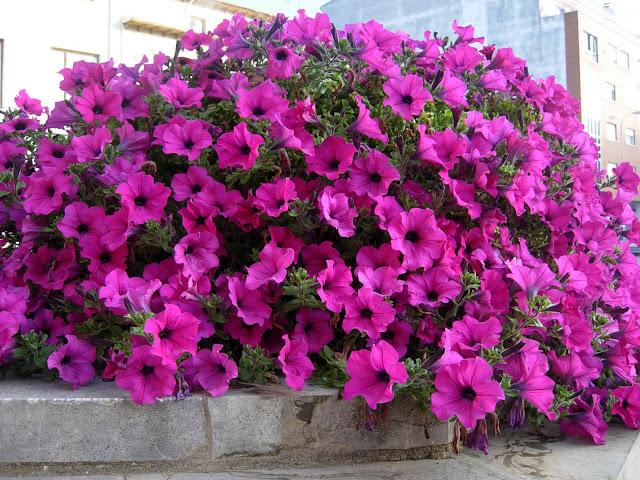

Drought tolerant
Pelargonium ivy
Under favorable conditions, it can bloom all year round.
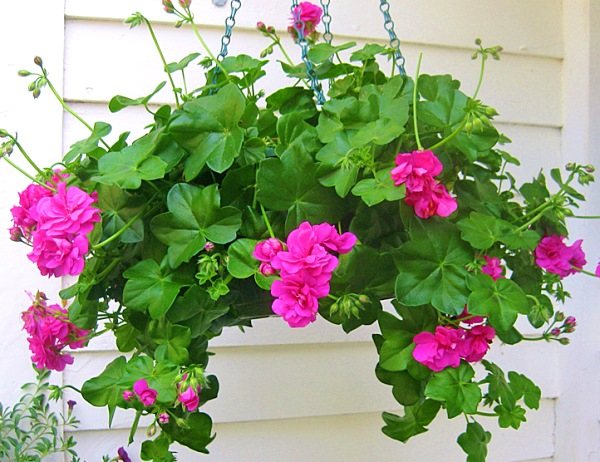

Loves bright places, but can feel good in partial shade. Withstands drafts, therefore it often serves as a decoration for windows open for the summer.
Gardeners' secrets - Pelargonium loves to “drink” milk diluted with water and live in cramped conditions. The roots should be close to the sides of the pot.
Ferulleaf succession
Charming clouds of yellow delicate flowers surrounded by lace leaves. It is very popular in Europe, although it got into the circle of interests of flower growers only in 1992. It was noticed by breeders, thanks to which a dozen varieties have already been bred to date.


It can be used in ground flower beds, it looks charming in hanging compositions and solo. It tolerates well not only drought, but also prolonged cold snaps and shaping (shearing), does not require fertile soils, does not suffer in thickened plantings.
This group includes all ampelous succulents (plants that can accumulate moisture in special tissues). It is an ideal choice for sites where owners do not have the opportunity to visit them every day. The best of them: ceropegia wood, ripsalis, sedum, erythyllum, sickle-shaped crosses, rooting, large-reed, rouley.
Ampel flowers for pots are a simple solution not only to visual problems of a personal plot, but also to numerous design ideas. If it is impossible to transfer perennials to a warm room for the winter, it is enough to leave one small mother plant, to find a place for which in the house is much easier. And in the spring, it will easily give life to new flower arrangements that will bring life to the most modest corners of your garden.
Pelargonium (geranium)
The most popular variety of pelargonium for vertical gardening is Ivy-leaved. Its creeping shoots grow up to 1 meter in length. Terry flowers on long peduncles are the favorites of landscape designers.
Geranium is another well-known name for ampel flowers for the garden. A photo of pelargonium conveys well the beauty and sophistication of the lush inflorescences and flexible shoots of this plant.


She is well suited for sunny places and a temperature regime of 20 ° ... 25 ° C. Pelargonium prefers regular but moderate watering and does not tolerate stagnant moisture.
Depending on the variety, it is available in white, pink, purple and two-tone shades. With proper care, it blooms throughout the summer season.
Ampel plants in your garden
Floral fashion is moving forward, and more and more gardeners are decorating gazebos, verandas, pergolas with hanging baskets with ampelous plants. Even if you don't have a summer cottage, you can plant them in balcony boxes or place them on a windowsill. Ampel plants will help to decorate a boring wall of a house, to liven up a window or an entrance, to create a festive mood on a terrace or patio.
Ampel plants are indispensable for decorating a summer cottage
Ampels (ampelous plants) are decorative species with long shoots climbing upward or creeping along the ground, grown in hanging pots, pots, flowerpots, baskets. Today, even some types of shrubs are increasingly grown as ampelous ones.
Compositions of ampelous flowers in your home
Ampel flowers for the garden should be planted in large raised flower beds, on alpine slides, or put pots with them on decorative stands. Garden flowers of a bright color, for example, red or blue, will look best on the lawn or among the trees. For outdoor cultivation, it is more practical to choose perennials.
It is better to choose ampel flowers for the balcony from annual species with a long flowering period. For example, it can be ampelous geranium, fuchsia, petunia, verbena, which must be sown from late February to mid-March. On glazed balconies and loggias, floral arrangements of pastel shades will look good. Placing flowers on the balcony is also a good option to have a pleasant aroma.
Ampel flowers can decorate any corner of your home or garden. The shoots of dichondra, asparagus or Rowley's rosewort falling from the windowsill will look especially original.
Ampel plants can also be used as vertical landscaping. For example, they will look great on the wall of a house or gazebo. To do this, you need to choose those species that do not require careful care.
By properly caring for and choosing suitable places for seedlings of ampelous plants, you can create unique compositions that will delight with their bright flowering and beauty of forms.
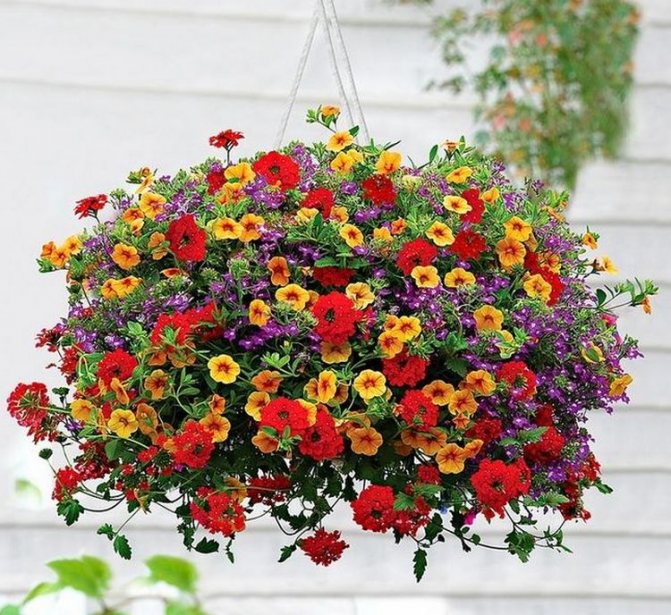

Types of ampelous plants
The name of these plants comes from the German word Ampel - a hanging flower vase.
Petunia
She can rightfully be called the “queen” among all ampelous plants. A rare gardener does not plant it on his site.
Petunia - the queen of ampelous plants Florists love petunia for a wide variety of colors, relative unpretentiousness and long flowering - from early spring to late autumn. Even if you completely dry the plant, just spill it well, and the petunia will delight you with flowering again.Prefers fertile, slightly acidic soil, it is better to place it in a warm, well-lit place.
Surfinia
Due to its extraordinary similarity, surfinia is often called ampelous petunia.
The beauty of surfinia will fully manifest itself with good care It should be noted that if you see a very dense multi-flowered bush of petunia, you should know that it is surfinia. Subject to all the conditions for keeping surfiniya, it is capable of reaching 100 cm in length.
Pelargonium ampelous (geranium)
Until petunia became so popular, geranium was on the throne of the “queen” of ampelous plants.
Geraniums have long been adorned with balconies, gazebos and garden plots.
Even in Soviet times, our mothers and grandmothers decorated balconies, gazebos, garden plots with it. Even today, it is very popular due to its decorative flowering, drought resistance and phytoncidal properties. Pelargonium is thermophilic and sun-loving. Prefers loam and moderate watering.
Begonia
An extremely unpretentious plant, which is no less than petunia and geranium loved by all growers.
Unpretentious begonia loves the sun However, it should be borne in mind that begonia loves the sun, and in partial shade and shade it loses its decorative properties. She likes light, slightly acidic, humus-rich soil.
Lobelia
This ampelous plant feels great both in the sun and in partial shade.
Lobelia container can be placed in partial shade Prefers always moist soil rich in humus. In addition to the annual, there is a perennial lobelia, which requires careful shelter for the winter.
Verbena
Extremely unpretentious ampelous plant. Florists love vervain for its long flowering - from early spring to autumn.
Verbena will delight with long flowering She prefers loose, well-fertilized soil, as well as sunny places. Does not tolerate fertilizers with a large amount of nitrogen.
Diastia
Loves the sun and light sandy soil.
Diastia is demanding on soil moisture
She, like verbena, does not tolerate excess nitrogen. In hot, dry summers, diastia requires abundant watering.
Dichondra
Decorative leafy ampelous plant. People also call it “silvery” waterfall.
Dichondra is charming in the company of other ampelous plants
Looks great in combination with other plants in hanging pots and baskets. Loves partial shade or sunny places, prefers loamy soil.
Bacopa
A perennial plant, however, it is often used as an annual.
Bacopa grows equally well in sun and partial shade
Extremely loved by Europeans, but little known in our country. The birthplace of Bacopa is South America. As long as it is warm outside, it will bloom. Loves sunny places or partial shade, does not tolerate waterlogging and drying out of the soil.
Nolana is weird
Nolana is relatively unpretentious and drought-resistant.
Nolana is strangely unpretentious and drought tolerant
It blooms with lilac or blue flowers. The shoots of the plant are capable of reaching half a meter. To place it, choose a place protected from the winds.
Scevola is pleasant
It is appreciated for its very abundant flowering.
Pleasant Scovola will delight you with abundant flowering Scovola is also unpretentious, prefers loose, well-fertilized, moderately moist soil.
Campanula isifolia
This is a plant of the bellflower family, popularly also called “the bride and groom”.
Equivalent Campanula will be good in partial shade
It has thin, creeping stems about 25 cm long. During the flowering period, the plant is completely covered with placers of white, purple or blue star flowers. For a long and abundant flowering, it is necessary to promptly remove wilted inflorescences. Grows well in light shade, prefers moist, loose soil.
Fuchsia ampelous
The cups with curved edges, painted in white, pink, give a special grace to fuchsia flowers.
Graceful fuchsia prefers partial shade
She doesn't like the scorching sun. Prefers constant moderate soil moisture.Falling (ampelous) fuchsia blooms from early autumn to September.
We have listed only a small part of the whole variety of ampelous plants. If none are still present at your dacha, maybe it's time to pay attention to their advantages: they are decorative, take up little space, and if necessary, they are easy to move. However, remember that many ampelous plants lose their decorative appearance if the basic growing conditions are not followed.
Ampel nasturtium
Nasturtium is distinguished by its decorative originality, having flowers of an original form with coloring in red and yellow shades. Blossoming is nicely complemented by contrasting leaves. Nasturtium does not grow in the room and
... Many flower growers have paid attention to its diversity, willingly cultivate it. Depending on the variety, nasturtium is more or less climbing, often curls, or vice versa, looks like a herbaceous bush.
Although this flower requires a fair amount of sun, it can also live in partial shade. Often grown in garden vases, it also looks elegant in hanging vases. Ampelous nasturtium gives rather long shoots, more than a meter. A beautiful look is obtained from the combination of red, orange and yellow flowers. But there are also terry varieties. The plant is easy to sow and get seedlings, but this should be done in May, when frosts are excluded. This culture is unpretentious to the soil.


